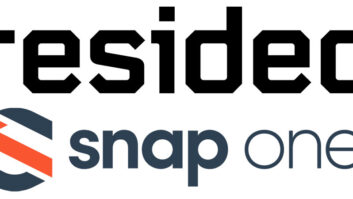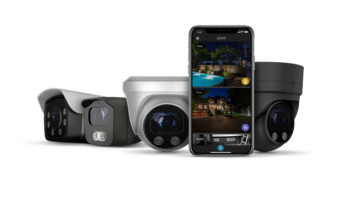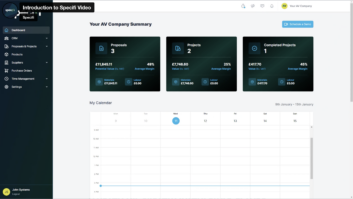For years, our company – like so many other custom installation firms out there – has specified smart, universal remote controls into nearly every system that we sell. As the remote is the principal point of contact for an end-user when using their system, it is an invaluable tool to being able to actually enjoy system operation.
You can sell the best looking TV in the world, pair it with the best sound system in the world, connect it with the best cabling and then have the client’s favorite movie in the highest resolution format, but if they can’t figure out how to make it work, then you have just given them a bunch of expensive, glossy garbage and a nice, new, shiny round drink coaster.
Since virtually every consumer electronics device now comes with a remote control, most systems – TV, Blu-ray, cable/satellite box, AV receiver – typically have at least four remote controls. For many people, that is about 3½ remote controls too many. Then if you add some additional things like a CD player, Apple TV, or that ne’er-do-well VCR that hangs around waiting for that once-a-year opportunity to play old wedding videos and cartoons, then you can easily be up to seven or more remotes. You might as well ask the client to juggle chainsaws tipped with frickin’ laser-headed sharks. (Please have the decency to have a video camera on hand first.)
And I have learned from years of experience that the typical end-user often considers instructions like, “When you want to watch a DVD, use the TV’s remote to put the TV on Input 2 and then use the receiver’s remote to put the receiver on the DVD input. Then use the DVD remote to control the DVD player to watch the movie. When you want to raise and lower the volume, use the stereo remote,” just slightly more complex than attempting to remotely walk James Lovell through the delicate procedure of restoring life support systems aboard Apollo 13. There is a lot of swearing, fuses pop, and the entire space program as we know it hangs in the balance.
The solution is the smart remote control, and, I must say, it has served our industry very well. With competent models starting at $150, this is a virtual no-brainer add-on sale that many customers welcome. (There may be a few initial moments of, “You expect me to pay HOW MUCH?! For a REMOTE CONTROL?! You mean this system doesn’t COME WITH a remote?!” After the initial wave of shock and hysteria subsides, they eventually come to be grateful for the remote, and offers of naming first-born children after the programmer are not unheard of.)
(I’m actually going to step off-topic for just a second and state for the record something that I would have assumed didn’t need to be stated. But judging from the umpteen number of times that I’ve had to tell people this, it clearly IS something that needs to be put out there. So here goes: just because you have a smart, universal remote control it does NOT mean that your other remotes won’t still work. They will. The new remote doesn’t come into your home and set-up an anti-original-remote-control-force field that blocks the original remotes from working. It just blasts out the same – EXACT SAME – codes as your original remote. Also, part and parcel with this, if your component – I’m looking at you, cable box! – won’t respond to the ORIGINAL REMOTE, then it won’t respond to “that fancy remote control that you sold me” either. OK? Just reboot your frickin’ cable box already.)
So, as I was saying, for years our company has sold literally hundreds of smart remote controls, most commonly models from Harmony that sell from $150-250 and URC (formerly of the slightly confusing “Universal Remote Control” name fame) models ranging from $450-750.
And as great as these models are, they are mostly just one-trick ponies: they are smart, universal system controllers. Now, granted, that is a pretty frickin’ amazing one trick to have. They take all of the commands and buttons from other remotes and combinulate them into one, much easier to use model, reducing most complex operations to a single, reliable button press and making systems easy enough for anyone to operate. And I mean anyone. With my URC model, my mom can operate my system with no trouble* at all.
(*To be honest, there was the one time that she accidentally got into the device control section and then lowered my projection screen and then couldn’t figure out how to raise it back up and then had to spend the rest of the night reading because the main Plasma TV was covered by 115-inches of blank white screen. But, that was just once, which is like .001 percent of the time and if you knew my mom, you would understand how colossally amazing that really is.)
But, after you sell a smart remote control, that’s pretty much it. The sale is done. They can control their TV and stereo and cable box and whatever, but that’s all. The pony is pretty much maxed out no matter how much you feed it sugar cubes and brush its mane. Sure you can wait around until the client adds a new component and then needs to have some reprogramming done, or you can hope that someone in the family drops the remote on the title floor and it breaks (it happens) or that the dog bites the remote in half (shockingly happens quite often) where you sell them a new model, but for the most part, a smart remote sale is a dead-end.
Instead of a One Trick Pony, why not sell a Trojan Horse?

As you’ll recall, the Greeks used a giant wooden horse to sneak a bunch of soldiers into the city of Troy. After nightfall, the Greek soldiers quietly snuck out of the belly of the wooden horse and then ravaged the city; hiding all of the Trojan’s car keys, drinking all of their beer, covering everything in a sticky film baklava honey, and leaving all of the women’s toilet seats up. It was just dreadful.
But what if you could use this horsey bit of subterfuge to sell a smart, universal remote control that was actually much, much more? And instead of getting into their homes and wreaking havoc, what if the remote got into their home and created tons of additional selling opportunities for you?
Our company has started selling Control4, but similar Trojan Horses exist from URC with its new Total Control series and Crestron with its Prodigy line.
Here’s how the Trojan works… The client wants a smart, universal remote control for all of the same reasons that they need to have one in the first place. But instead of the $550-750 remote and radio frequency base station dead-end sale we had been selling, we spec in a Control4 processor and remote costing $699. The customer gets the smart, easy-to-use, all-in-one, handy-dandy remote control system that they wanted and we install a hidden, ticking time bomb of repeat business into their rack.
The plan begins to unfold when they start using the system and see the on screen GUI with some visible icons like lighting and comfort and security.

“What are those?”
“Oh, those are other features that the remote control can support.”
“Well why are they all grayed out? And why can’t I select them.”
“Well, right now the system is only controlling your surround sound system, so those features aren’t enabled.”
“So, wait. You mean I can use my remote control to control my lights? And my HVAC system? And my security? Why aren’t I doing that?”
Pow! Trojan Horse! (Pro tip: Shouting, “THIS IS SPARTA!!!” may be considered “threatening” and actually frighten your customer, causing them to ask you to leave, and resulting in a loss of all the ground you’ve gained to this point.)
This is your chance to offer lighting control, HVAC replacement, security integration and any other cool automation doohickey you can think of. And as you add these devices, they can then be augmented with touchscreen or iOS control app add-on sales.
The point is, once you get the Trojan Horse into the client’s home, you can continue to call back, offering them additional exciting features to add to their system again and again. They feel like they continue to receive value from their initial purchase, and you have created additional, residual sales opportunities.
Whereas before, a single remote control was just a one-off, dead-end sale, the Trojan Horse’s install motto is more, “From One Comes Many.” And that’s E Pluribus Awesome.
To ensure that you are trained up on the latest practices, parts and programming tips, be sure to attend the CEDIA EXPO, held in September this year in Indianpolis. It is the annual must-attend event for custom installation professionals. Click here to register, and use code CT07 at check-out to attend the show for FREE! (You’re welcome!)







